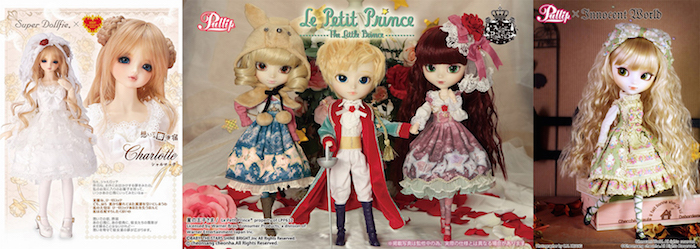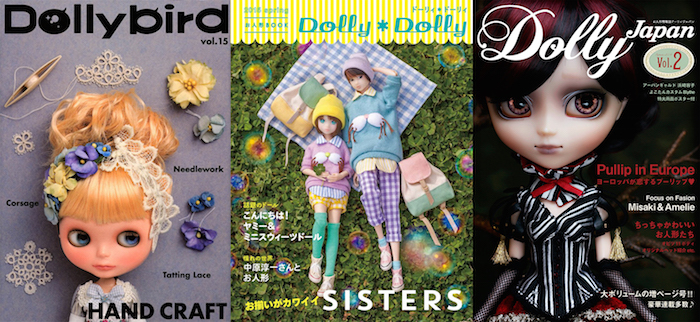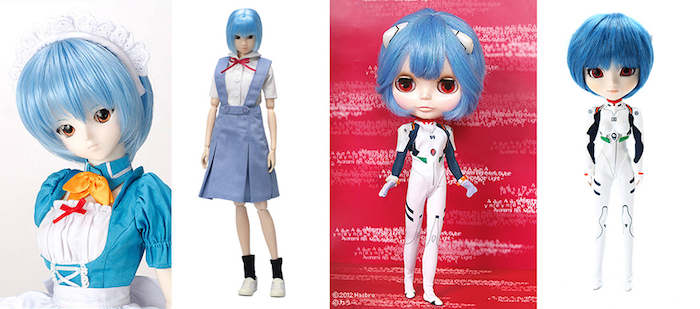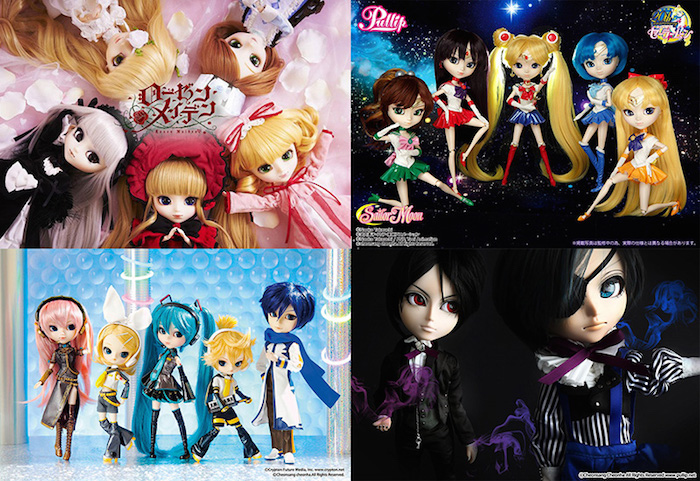
Otaku Wonderland Part 6 – Dolls and Pop: one fandom is not enough
- Details
- Written by Elena Tessari

In the past two installments we have explored the features of Japanese bjd and fashion dolls; yet, there is much more that can be said on doll collecting fandom and its ties with the world of pop culture and otakudom.

Japanese doll collectors gather at doll parties, trade shows and read specialized magazines where they can find interviews with custom artists; patterns for outfits and tips to improve and enhance their dolls. Some prefer bjd, some dedicate their time to a specific fashion doll, some just love dolls all round. A special niche is, of course, occupied by those who collect Super Dollfie, which we have discussed in a previous article.
Leafing through a fandom publication, or mook, one can read the many advertisements and notice that most of the interest still focuses on nationally produced dolls, specifically created for the Japanese market. It's also fairly clear that producers' target is the 20-30 female demographics.
Typically Japanese female fandom tends to distance itself from otaku and its socially negative connotations. Yet, it's undeniable that there is more than a link between those two worlds. First, online and brick-and-mortar stores that sell dolls usually also sell merchandise and figures; this is the case for many Akihabara stores. Even some producers divide their attention between dolls and figures (Volks, for example); this is compounded by the fact that, in the end, some dolls such as the Dollfie Dreams and others, are clearly targeted at the male otaku demographics.
Another strong tie between the two worlds comes to the fore in the many 'collaboration dolls' inspired by pop culture characters from anime, manga, fashion, music and cinema. We can mention, for example, Super Dollfie and Dollfie Dream by Volks, or Groove's Pullip.
Otaku goods producers didn't take long to notice a potentially lucrative market, and the choice to produce cross-over goods has largely paid off. The best sellers? Evangelion, Rozen Maiden, Gosick, Vocaloid.

Rei Ayanami as Dollfie Dream, Momoko, Blythe and Pullip
Another strong link exists between dolls and alt youth culture. Fashion brands such as Baby, The Stars Shine Bright, have sponsored collaborations that bring together designer dolls and real-life inspired brand clothing. There are even 'three-way collaborations' between doll makers, fashion brands, and models or film production houses.

Super Dollfie Charlotte ( outfit Baby The Stars Shine Bright), Pullip Le Petit Prince series (Alice And The Pirates), Pullip Typhona (Innocent World)
Even abroad collaboration dolls are crucial. Browsing through dedicated forums it's not unusual to come across collectors that got started through their love for lolita fashion, j-rock or anime, types of media which have become global in the past two decades. One might even find non-Japanese otaku who, while not defining themselves doll collectors in the truest sense, buy and display online their collaboration dolls.

Pullip series featuring Rozen Maiden, Sailor Moon, Vocaloid, Kuroshitsuji
The doll collecting phenomenon is fascinating and multi-faceted. It might be a niche market with hefty price tags, but it's also fertile ground for creativity and, one should add, shrewd marketing operations hinging on the attractive potential of Japanese pop culture, nationally and abroad.
Our overview of collecting, both otaku and non, in Japan showed us the strong bond that exists between multimedia products, and the broad undergrowth of 'corollary goods' that enhance and enrich the collecting experience. From stationery to gadgets, from figures to dolls, possibilities are endless and ceaselessly surprise foreigners with their amazing diversity.


